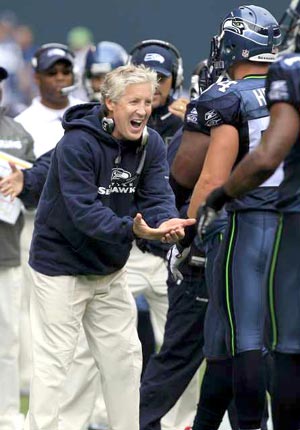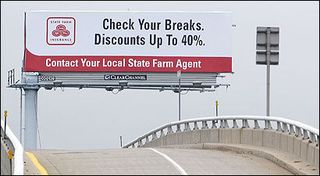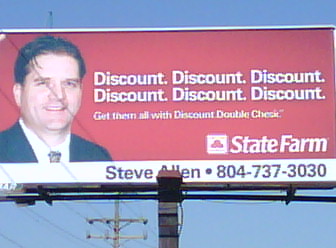Many of us have experienced the emotional high that results from a well run motivational sales conference. Unfortunately, not many of us successfully convert that flash of energy into long-term change that impacts our business.
What’s missing? We are not using that temporary moment of motivation to begin the process of replacing old habits with new ones.
Successful people understand that their success, in part, is derived from a consistent pattern of converting emotional “ah-ha” experiences into sustainable long-term habits and rituals. Without the habits and rituals, we keep doing what we did before, and those “ah-ha” catalyst moments are forever lost.
If you are naturally gifted at converting these short-term energy bursts into the hard work of developing and sustaining long-term habits, then chances are, you have built a successful life. That is what successful people do.
 What might come as a surprise to you is that most people don’t do this. It may even frustrate you that people under your management don’t do the things that you do so automatically. It’s critical for managers to understand that they need to expand their role to include teaching others the formula for forming new habits. It’s also imperative for managers to develop systems to help this become part of the overall culture.
What might come as a surprise to you is that most people don’t do this. It may even frustrate you that people under your management don’t do the things that you do so automatically. It’s critical for managers to understand that they need to expand their role to include teaching others the formula for forming new habits. It’s also imperative for managers to develop systems to help this become part of the overall culture.
A recent survey of 10,000 real estate professionals outlines what agents expect from their company. Look at what came in number 2 and 3:
- Respect, honesty and trust
- Leadership, guidance
- Accountability / career coaching
According to the second two expectations, agents are expecting you to hold them accountable. This desire opens the “I give you permission” door to teaching and building what I am about to describe.
To accomplish the above you must become an expert at habit change, as well as an educator, facilitator and creative strategist in building venues around sustaining these changes. So, let me help you get started on becoming an expert on change…
People resist change. Period. For most people change must be understood, taught and aided toward and through implementation. Habits are not formed by emotion (although this is the initial catalyst). Change comes through a very predictable formula.
So, what does create change? People say will power is the primary ingredient, and that is true to some extent. But, will power without action, doesn’t work.
Let me use an example that is relevant at this very moment. Millions of five-year-olds are starting school for the first time this month. I live on what is referred to as “Education Hill” in Redmond, Washington. There are five schools, three of which are elementary schools, within 1.3 miles of my home. My commute is heaven in the summer and horrible in the fall. Why? Because all of these new-to-school children are being dropped off by their parents to ease the transition into this new habit of leaving home daily and going to school.
The first few days, there are tears, tantrums and resistance to this intrusive new habit of leaving donuts, Barney, Lego’s, and Sesame Street at home, and instead being expected to sit quietly without mom or dad, for three to six hours at a time, with a teacher who wants them to concentrate on what she’s teaching them. Yuck.
A month into this process, most children will have converted this whole new process into a habit that they’ve learned to enjoy and sustain. This serves as a great example of the fundamentals of habit change.
So here are the steps made simple – A habit will become part of your typical day if you do these things:
- Start it now. New habits must begin when the emotional surge or temporary insight is available and fresh. You, as a manager, must be prepared to help new agents and experienced agents returning from a conference, implement new habits, and get rid of old ones immediately.
- Do it early in the day. Any new habit is much more likely to be sustained if it is initiated in the morning hours, if not first thing in the morning. Once behaviors become habits they can be moved around throughout the day. For example, when I first started working out 24 years ago, I had to do it in the morning. Now that I can’t imagine life without it, I can move it around the day, knowing I’ll get to it.
- Don’t deviate. This is key. You must maintain the new behavior or task for at least 45 days if it is being practiced daily, and up to 4 months if it is weekly, to begin to feel like it is a habit. Anyone who attempts to reward themselves with old habits while trying to build new ones, is usually doomed to failure.
- Set up accountability. This is where you come in. There must be systems developed to help the agents keep themselves accountable. This is usually done in one-on-ones, groups, or both. There is a reason why AA is so popular.
One of our most successful clients has a manager or two who have developed groups that meet in the mornings on a regular basis, specifically to build new habits. One manager even began a walking group that meets in the mornings for a two-mile walk, three times weekly.
The point is, as a manager, this is your job. Your agents want it. Become experts at delivering it. If you’re too busy to do the above, then you may need to find others to put out the fires so that you can spend more time doing what really impacts the business— and the lives of those entrusting their livelihood to you.
Editor’s Note: This article was written by Dr. David Mashburn. Dave is a Clinical and Consulting Psychologist, Partner at Tidemark, Inc. and a regular contributor to WorkPuzzle. Comments or questions are welcome. If you’re an email subscriber, reply to this WorkPuzzle email. If you read the blog directly from the web, you can click the “comments” link below.














